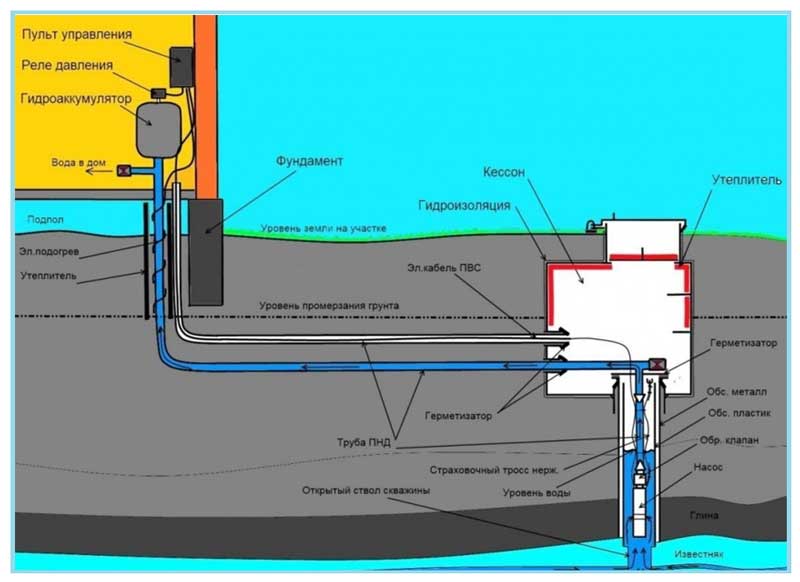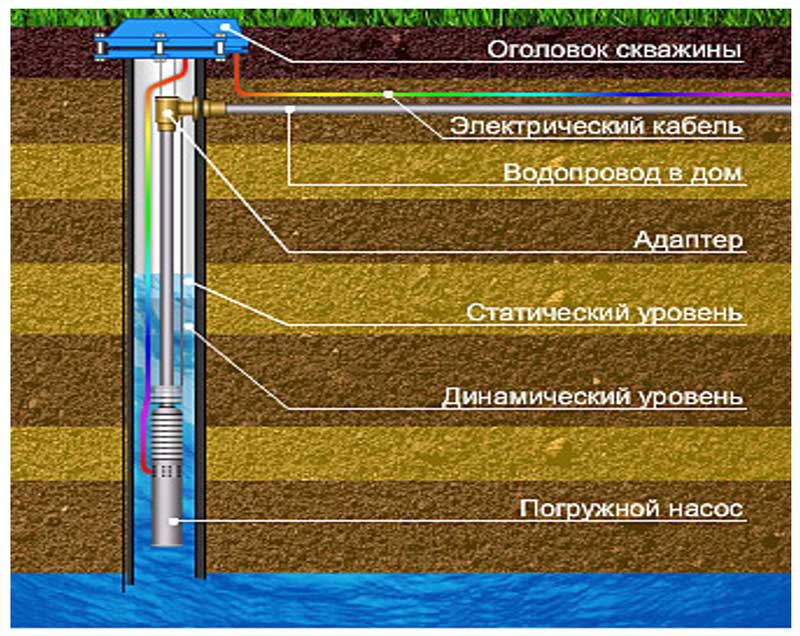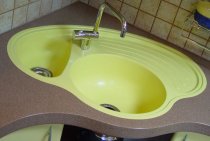Using a heating cable
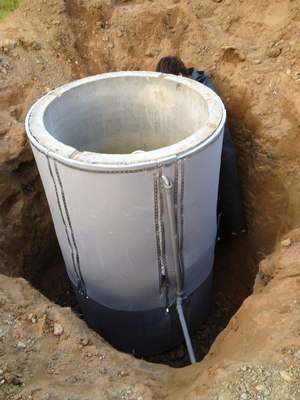
Such a cable heats up as a result of the resistance of the material from which it is made to electric current. As it heats up itself, it also heats the pipe. To insulate the well for the winter, you need to use a special cable. It is made of durable material that is not afraid of corrosion.
For installation, it is necessary to dig a small pit to a depth below the freezing level of the soil. Then a heating cable is attached to the pipe wall. It can be laid in coils or in a straight line. It is better to follow the instructions that came with the purchased device. Then, heat-insulating material and waterproofing are wrapped around the pipe and cable. Next, you can fill the pit, after connecting the device to the power supply and checking its performance.
Warming methods
To answer the question - how to insulate a well for the winter with your own hands, first of all, you need to find out the possible options. And they will depend on the workload of the well itself. So:
- if the water supply is used constantly, all year round, then water under pressure is constantly present in the pipe. In this case, it is unlikely to freeze. But the water supply does not work around the clock. This means that at night the water in the well is standing and may well “succumb” to frost. Do not forget about the equipment that is installed on the head. Pumps and other devices are often located here, all of which are very sensitive to the appearance of ice in the pipes. Therefore, even if the water supply (and hence the well) is constantly working, they still need to be insulated. Only in this case it is enough to mount a heat-insulating layer or install a caisson;
- if the well works only in a warm period of time (for example, in a summer cottage), then conservation is carried out before the winter cold. To do this, all equipment is removed, water is drained, and the well itself is closed;
- if you come to a country house periodically (for example, on weekends or holidays), then it is advisable to install electric heating around the head of the well. It doesn't need to be running all the time. It is enough to turn on the heating immediately after arrival, and after a while you can use the water tap.
You can combine the first and second insulation options. This is especially true for those regions where frequent abnormal frosts are observed. Carry out passive insulation (a layer of heat-insulating material) and additionally install electric heating. It will cost a little more, but an uninterrupted supply of water to your country house will be guaranteed.
Do I need to insulate the well from the cold
Well insulation for the winter is carried out for the following reasons:
- If a sand or artesian well has an upper casing pipe located in a caisson pit, then when water passes through the pipes from the head to the house in an open section of the caisson, it can freeze and, when expanded, damage the water supply.
- If the water level in the well is high, its presence close to the surface can cause freezing and consequent damage to the casing pipes, in which case it will become impossible to use the well.
- Any submersible electric pump has a check valve in the outlet pipe area, it is built into the pump model itself or installed separately by screwing onto the top fitting. Thus, it prevents the outflow of water into the well and it is always in the pressure pipe.A similar situation is observed with surface electric pumps, where a check valve is installed at the end of the supply hose. In severe frosts, water can freeze in the suction section of the HDPE pipe and its supply to the house with pumping equipment will stop due to the ice plug.
Rice. 2 Design scheme of the caisson and well insulation
- Many caisson pits install surface pumps and equipment - if the pump is shallow underground along with automatic equipment, they also need to be protected from the cold due to the constant presence of water in them when turned off.
- The need for insulation also arises when the owners are absent for a long time and if during operation the well is subjected to short-term conservation - water frozen in casing and pressure pipes will make its further supply impossible.
- Some types of wells do not have a caisson pit - the construction of a casing top pipe is located at or slightly above the ground surface. In this case, it is necessary to think about the fact that the well needs to be insulated at its mouth to ensure uninterrupted water supply.
Rice. 3 Connecting the electric pump via downhole adapter
Why you need insulation
In severe winter conditions, which are observed in almost all regions of our country, the soil can freeze over a considerable distance. So, in the Moscow region, this figure reaches one and a half meters, and in more northern regions it sometimes exceeds two or more meters. Such circumstances can adversely affect the well supplying water.
With the onset of cold weather, water turns into ice. If this happens at the head of your well, then you can forget about supplying water to the house for a while. It will be necessary to carry out work to remove the ice plug or wait for the onset of spring. Therefore, the head of the well must be insulated without fail.
Making passive insulation
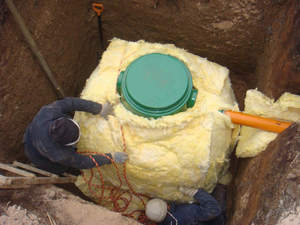
- insulation by installing a caisson;
- use improvised materials;
- insulated with a casing pipe.
A caisson is a structure that is installed at the top of the well. It is a hollow container that surrounds the pipe to the depth of soil freezing. To create a caisson, you can use different materials: concrete rings, brickwork, a metal barrel or finished plastic products.
The caisson installation will look like this:
- a pit is dug around the well, its depth should exceed the level of soil freezing by at least half a meter;
- at the bottom of the pit, a sand cushion is made, 10-15 centimeters thick. Walls are erected on it (around the well) or a ready-made container is installed. At its bottom, it is desirable to make a hole and connect a drainage pipe. This is necessary to remove the accumulated condensate from the caisson;
- further, a layer of heat insulator is laid around the container. To do this, you need to use a material that is not susceptible to the harmful effects of moisture;
- installs an inspection hatch in the upper part of the tank and you can fill up the pit.
The caisson does an excellent job of protecting the well from freezing in winter. In addition, all the work can be completely done with your own hands and for little money.
Another way to insulate a well is to use a casing pipe. The principle of operation is similar to the installation of a caisson. With his own hands, he digs a pit to a depth below the level of soil freezing. Then the main pipe of the well is wrapped with a heat-insulating material that tolerates moisture well. After that, a pipe of a larger diameter is put on top of the entire structure. Such a structure also reliably protects the well in winter, and besides, it is much easier to make it than to install a caisson.
To insulate the well for the winter with your own hands, you can also use improvised materials. If in your area the temperature rarely drops below 15 degrees, then sawdust can be used as a heat-insulating layer. It is even easier to make insulation with your own hands using straw or dry leaves. It is enough to pour a bunch of this material around the well. Leaves and grass will rot, causing heat to develop.
How to make thermal insulation
The installation of passive thermal insulation depends on the design features of the well. In addition, the volume of liquid raised from the well should be taken into account. Similarly, protection is needed for oil wells. You can use 1 of the following options:
- Construction of a caisson. It is a traditional way to protect equipment and a well operating in the winter season.
- Heating cable installation.
- Casing pipe device.
- Insulation of oil and water pipes with the help of improvised means.
A caisson is a structure built around a cap or oil wells. For construction, you can use a variety of materials. Often the structure is made of concrete. You can speed up the construction process by choosing finished products made of metal or plastic.
Buildings can be of different shapes, but barrel-shaped structures are most often preferred. Warming of the caisson of water and oil wells can be done by hand, the process consists of the following steps:
- Take measurements, pick up a plastic container. You can also use metal products. In some cases, you can get by with a barrel, the volume of which is 200 liters.
- Dig a hole around the head. Its bottom should be 45 cm below the freezing level of the soil, then even in severe frost the liquid in the pipes will not freeze.
- The diameter of the pit should be such that it is about 0.5 m to the head on each side. Cover the bottom of the pit with gravel, then fill with sand. You must make a pillow 10 cm thick.
- Make a hole in the bottom of the container. a pipe will run through it. A hole for the pipeline must be equipped in the side of the barrel.
- Put the container on the head and secure it carefully. So you can make the protection of oil and water pipes.
- The junction of the head and pipe will be in the barrel. Even a pump can fit into a large frame. At the bottom of the barrel, you can make a drainage tube to drain the condensate, it will go into the soil.
- Put insulation around the barrel. It is better to use one that is immune to aggressive environments.
Polystyrene has proven itself well. You can also use mineral wool, but when choosing this material, you should not forget about laying a waterproofing layer.
Close the caisson, a ventilation pipe must be attached to the cover. Be sure to cover the top of the barrel with insulation. Fill in the hole. Such a frame will be an ideal option for protecting the well.
Casing pipe and improvised materials
The construction of the casing pipe consists of the following steps:
- Dig a pit around the head. The depth of the pit should reach the level of soil freezing.
- Wrap the well pipe with a heater, for example, mineral wool. After the material is fixed, put a larger pipe on top
- Fill in the hole.
The next method of well insulation is based on the use of materials at hand. If the house is located in a region with a warm climate, sawdust can be used for thermal insulation. Please note that the temperature must not fall below -15 °C. Sawdust is cheap, you can buy it anywhere.
What if there is no well on the site? It is not worth drilling it on your own - it is better to contact a specialized company.
When insulating the well with sawdust, dig a hole with a diameter of 60 cm around the well, it should be slightly deeper than the freezing of the soil.If you do not want to do this yourself, use the services of teams. Pour sawdust into the pit, it is recommended to mix them with liquid clay. The solution will not only insulate the well, but also further strengthen the structure.
Straw and leaves are another option. They are laid in a pit and covered with earth. As it decomposes, the straw will release heat. But it must be remembered that this type of insulation is not durable. After 2-3 years, it will have to be replaced with a new one.
Laying a heating cable is the most efficient option for a well heating device. You will have to buy a special heating cable, it is highly resistant to external mechanical stress. If you are just thinking of making a well, contact the services of a drilling service.
For greater efficiency, the design can be additionally equipped with an automatic system. This will reduce the cost of electricity, but the estimate will change. You will have to increase the cost of insulation.
Cable laying consists of the following steps:
- Make a ditch around the well. its depth should exceed the freezing mark of the soil.
- Take the cable and wrap it around the casing. It is necessary to wind the pipeline. which is adjacent to the well. The cable can be laid not only in coils, but also in a straight line.
- on the pipe frame. around which the heating cable is wrapped, lay insulation. Mineral wool is excellent for this purpose, with it the insulation of the well will be done with high quality.
- When choosing an insulating material, consider the maximum allowable temperature of its heating, otherwise the insulation layer will melt. Put a waterproofing material on top of the heat-insulating layer, so you protect the frame from groundwater.
- Fill in the pit.
Which of the four options to choose? The issue is quite complicated, since the choice of a specific method for heating a well in winter is determined by the following key points:
- You must decide how often you are going to use the well in winter.
- Find out how severe frosts are in your area. If you are not going to come to the dacha in winter, then preserve it before frost. Lubricate the parts of the system, wrap the head with a cloth, and then wrap it with polyethylene.
The most effective method of insulation is the installation of a caisson. Warming will require financial investments, but in this case, you can use the well even at the lowest temperatures. In addition, the construction of the box will allow you to install devices outside the building, but high-quality insulation of the caisson will be required.
But you must understand that building a reliable caisson is expensive. It is best to entrust its construction to specialists who offer well drilling services.
If you plan to use the well only occasionally, then heating cable is the best option. By turning it on, you can raise water in 10 minutes. If your area is relatively warm, then to protect against frost, you can install a 2 casing pipe by placing a heater between the parts of the structure.
How to insulate wells with your own hands options for the winter
How to insulate a well for the winter with your own hands? This question is asked by many owners of cottages and private houses. If you live in a region where the temperature drops below 0 in winter, you need to insulate the well for the winter.
The depth of soil freezing in different regions is different. It all depends on how cold it is in winter. The average value is 2 m. If you have your own house in the Moscow region, you should remember that the soil in the region freezes by 1.5 m. Since the water contained in this layer crystallizes, it also freezes at the wellhead. As a result, it is impossible to pump it into the house.
In order to prevent interruptions in the water supply, experts advise starting by protecting the head of the well from the effects of frost. Make high-quality insulation, work should begin even before the first frost.
How to protect pipes from frost
You should start with the insulation of pipes coming from the well along the street. In addition, it is necessary to insulate the water supply pipe running in unheated areas of the building. It can be a basement or basement.
The pipeline must be laid below the freezing mark of the soil. Although you can do it differently by laying the cable, or by closing the pipe with insulation. Buy mineral wool or other insulating material for the well.
The choice of a specific isolation method depends on how often the pump is used. The options are:
Full time job. In this case, the pressure in the pipes will be maintained all the time, and the water should theoretically not freeze. However, the fact that the liquid may not move all the time, but only when there is a need for water, can lead to stagnation of the liquid.
Simple equipment. If it is long, for example at night, then the water in the pipes may freeze. And so it will be even if there is pressure.
The well works only in summer. in winter the pump is off
In this case, carefully drain the water from the system. Preserve pipes and taps
Irregular operation. You can draw liquid only on weekends, on other days the pump will not work. Install electric heating next to the head and pipe. Such equipment can be turned on upon arrival at the dacha. After a while, you will be able to use the well.
Keep in mind that special equipment is placed in the head, it is especially sensitive to sub-zero temperatures. For this reason, in regions with a harsh climate, thermal insulation of the well is necessary; modern materials are indispensable. There is another option for insulation, it involves the construction of a caisson. The design is a frame that covers the well itself and equipment.
